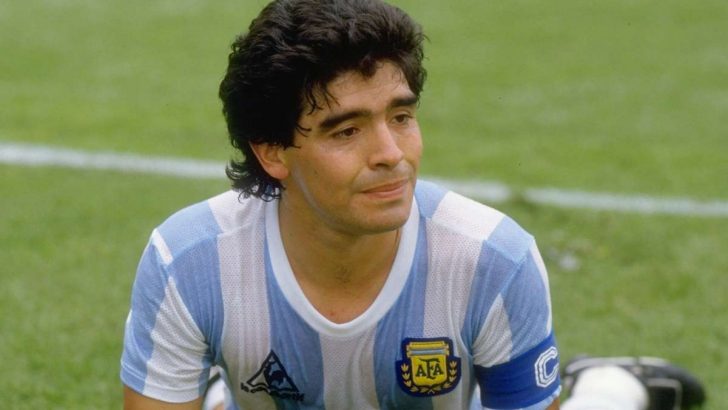By Tobias Käufer (KNA)
The two moments that made him immortal were only 180 seconds apart: in the 1986 World Cup quarter-final against England, Diego Maradona showed his two faces: that of the genius and that of the cheat. Because Argentina, on their way to their second World Cup title, had put the English, who were hated after the Falklands War, out of the way, his compatriots were not bothered by the most famous handball goal of all time.
In breach of the rules, he manoeuvred the ball past the baffled Peter Shilton into the goal and then blamed “the hand of God”. The result was one of the most controversial goals in football history. The discussions about it continue to this day. It was only at the weekend that Pope Francis, who hails from Argentina, issued a posthumous rebuke to the idol Maradona: the victory due to the irregular goal was “not good”, said the head of the church at an event in Rome’s Olympic Stadium on Saturday.
But in the same match, Maradona showed why he was the best footballer on the planet during his lifetime: his solo run through the English defence went down in history as the “goal of the century”. Argentina won 2:1, and when the team beat the Germans 3:2 in the final a little later – thanks to a brilliant pass from number 10 (“El Diez”) – he had finally become a legend.
Unlike reigning world champion Lionel Messi, who led a largely scandal-free life, Maradona, who came from a poor neighbourhood, was no stranger to the darker side of fame. An excessive party life and repeated cocaine excesses left their mark. There were also unconfirmed allegations of rape. The man who seemed to achieve superhuman feats on the pitch plummeted into the abyss in his private life.
Perhaps because of this ambivalence, Argentinians worship their “golden boy”, who died in 2020 after a turbulent life, like a god. Now his daughters Dalma, Gianinna and Jana and his former partner Veronica Ojeda want to have his mortal remains transferred to a kind of mausoleum in Buenos Aires. The authorities will have to decide whether this will actually happen. The Argentinian capital is already full of murals and photos depicting Maradona as a holy figure.
If the plan becomes reality, it would probably create one of the country’s most popular tourist destinations. The plan is fuelling the fantasies of countless fans around the world. A neighbouring Maradona Museum would also be conceivable. The latest technologies could even bring the national hero back to life virtually, complete with artificial intelligence.
In Buenos Aires, the veneration of famous dead people is a little more intense and passionate than elsewhere anyway. The grave of actress and “primera dama” Evita Peron (1919-1952), for example, is still a much-visited site today.
However, official authorisation is required before Maradona can embark on his second final journey. In a document leaked to the press, “sufficient security and confidentiality conditions” are required for exhumation and repatriation.
The country’s media are already reporting on what could happen next. On Maradona’s 64th birthday on 30 October, the mortal remains are to be transferred to the memorial, which is still under construction. It will be called the “Memorial del Diez” (memorial to the number 10) – in reference to Maradona’s jersey number. The location was well chosen as it is not far from the popular tourist destination of Puerto Madero. The presidential palace “Casa Rosada” and the capital’s cathedral, where a certain Cardinal Jorge Bergoglio, now Pope Francis, once worked, are also within walking distance.



